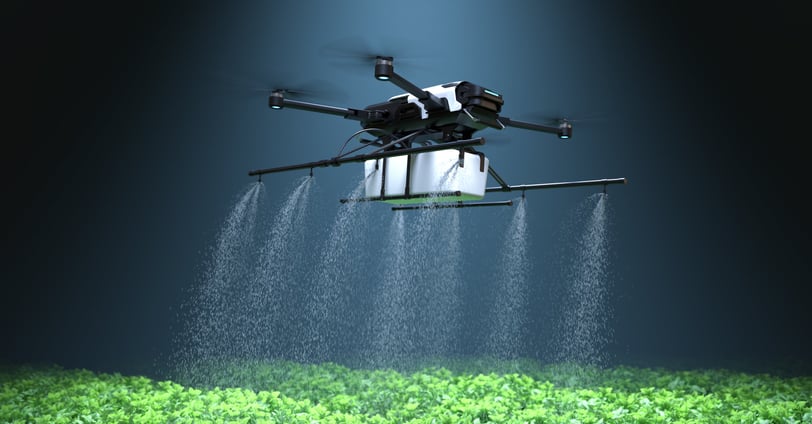Spray , Agricultural Drone Spraying for Crop Yield, Labor Reduction and an Environment
Discover how agricultural drones are transforming modern farming by improving crop yields, reducing labor, spray, and key benefits of drone spraying technology for efficient and crop yield
Agrizon
9/23/20242 min read


With advancements in technology, the agricultural industry is constantly evolving to improve efficiency and productivity. One such innovation that has gained popularity among farmers is the use of agricultural drones for crop spraying. This method not only increases farmers' yield but also reduces labor requirements. Let's explore the benefits of agricultural drone spraying in more detail.
Increased Crop Yield
Agricultural drone spraying allows for precise and targeted application of fertilizers, pesticides, and herbicides. By using drones equipped with high-resolution cameras and sensors, farmers can identify specific areas of their fields that require treatment. This targeted approach ensures that crops receive the necessary nutrients and protection, resulting in increased yield.
The ability of drones to fly at low altitudes and cover large areas quickly also contributes to higher crop yield. Traditional manual spraying methods often lead to uneven application, with some areas receiving too much or too little treatment. Agricultural drones, on the other hand, can provide consistent coverage across the entire field, ensuring that every plant receives the required amount of nutrients and protection.
Labor Reduction
Traditionally, crop spraying has been a labor-intensive task that requires significant manpower and time. Farmers would need to walk through the fields, carrying heavy backpack sprayers or operating large machinery. This process not only consumes a lot of time but also puts a strain on the physical health of farmers.
By using agricultural drones for spraying, farmers can significantly reduce their labor requirements. Drones can cover large areas in a fraction of the time it would take for manual spraying. This frees up farmers to focus on other important tasks, such as crop monitoring, harvesting, and overall farm management.
In addition to reducing labor, agricultural drone spraying also minimizes the risk of human error. Drones are programmed to follow precise flight paths and apply the correct amount of chemicals. This eliminates the possibility of over-spraying or missing areas, which can negatively impact crop health and yield.
Environmental Benefits
Agricultural drone spraying offers several environmental benefits as well. By using drones, farmers can reduce the amount of chemicals used, as the precise application ensures minimal wastage. This helps in preventing chemical runoff into water sources and reduces the overall environmental impact of farming practices.
Furthermore, drones are powered by electricity, which is a cleaner energy source compared to traditional machinery that runs on fossil fuels. This reduces carbon emissions and contributes to a more sustainable farming system.
In conclusion, agricultural drone spraying is a game-changer for farmers. It not only increases crop yield through targeted and efficient application of fertilizers and pesticides but also reduces labor requirements. With the added environmental benefits, it's no wonder that more and more farmers are embracing this innovative technology.
